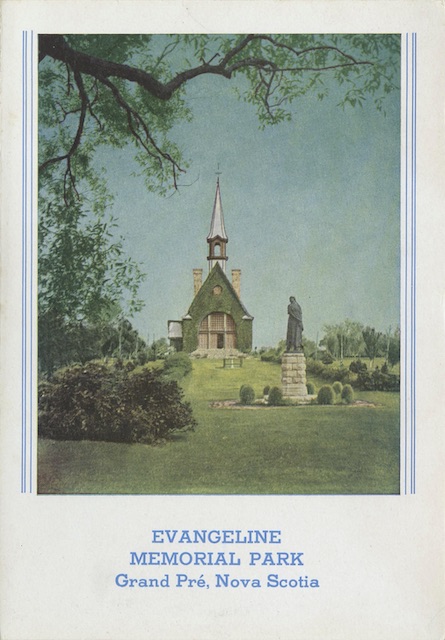Evangeline Park was a memorial to the forced deportation of French-speaking Acadians from Nova Scotia at the end of the French & Indian War, which is sort of like having a U.S. memorial to the Dred Scott Decision. But Henry Wadsworth Longfellow had written a poem about the deportation and its effect on one imaginary woman named Evangeline, and the poem led tourists to want to visit the sites that it named.
 Click image to download a 1.3-MB PDF of this menu.
Click image to download a 1.3-MB PDF of this menu.
Evangeline Park was, in fact, a private park created by the Dominion Atlantic Railway, an independently operated subsidiary of the Canadian Pacific. The railway opened a museum, planted gardens, built a period chapel, installed a well purporting to be one mentioned in the poem, and hired an artist to sculpt a statue of Evangeline. The railway sold the park to Parks Canada in 1957, which now calls it Grand Pré National Historic Site.
This 1947 dinner menu (cover printed in 1946) advertises the park without stressing the deportation aspect of it. Inside, table d’hôte meal prices have risen to $1.10 for the fish and $1.35 for beef and poultry entrées.
